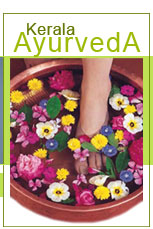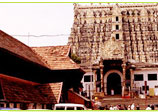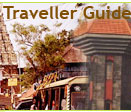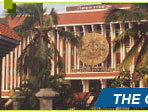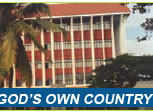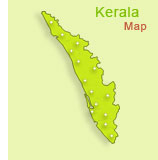¤¤ History
Thiruvananthapuram is an ancient city with trading traditions dating back to 1000 BC. It was a trading post for spices like the rest of ancient Kerala. However the ancient political and cultural history of the city was almost entirely independent from that of the rest of Kerala. The early rulers of the city were the Ays. With their fall in the 10th century, the city was taken over by the rulers of Venad.
The rise of modern Thiruvananthapuram began with accession of Marthanda Varma in 1729 as the founding ruler of the princely state of Thiruvithamkoor (Travancore). Thiruvananthapuram was made the capital of Travancore in 1745. The city developed into a major intellectual and artistic center during this period of time. The golden age in the city's history was during the mid 19th century during the reign of Maharaja Swathi Thirunal and Maharaja Ayilyam Thirunal . This era saw the establishment of the first English school (1834), the Observatory (1836), the General Hospital (1839) and the University College (1873).
The early 19th century was an age of tremendous political and social changes in the city. The Sree Moolam Assembly, established in 1904 was the first democratically elected legislative council in any Indian state. Despite not being under direct control the British Empire at anytime, the city however featured prominently in India's freedom struggle. The Indian National Congress had a very active presence in the city. This era also saw the establishment of the University of Travancore in 1937 which later became the Kerala University.
After the withdrawal of the British in 1947, Travancore chose to join the Indian union. In 1949 Thiruvananthapuram became the capital of Thiru-Kochi, state formed by the integration of Travancore with its northern neighbour Kochi. When the state of Kerala was formed on November 1, 1956, Thiruvananthapuram became the capital of the new state.
With the establishment of TERLS (Thumba Equitorial Rocket Launching Station) in the 60s, Thiruvananthapuram became the cradle of India's ambitious space program. The first Indian space rocket was developed and launched from the Vikram Sarabhai Space Centre (VSSC) located in the outskirts of the city in 1966. Several establishments of the Indian Space Research Organization (ISRO) were later established in Thiruvananthapuram.
A major milestone in the city's recent history was the establishment in 1995 of Technopark, an IT park. This placed Thiruvananthapuram on the IT map of India and it is today one of most promising in the country in terms of competitiveness. |
¤¤ Tourist Attractions
Padmanabha Swamy Temple
Located inside the east fort, this fascinating temple is dedicated to Lord Vishnu. The temple portrays both Kerala and the Dravidian styles of architecture. The mural paintings and the stone-carvings here are intricate and worth a dekko. The deity reclines on Anantha, the holy serpent. This is one among the 108 sacred Vishnu temples. Only Hindus are allowed to enter the temple and they too have to strictly follow the dress code, which is dhoti for the men and a saree for the women. The temple remains open from 4:15 am - 5:15 am, 6:45 am - 730 am, 8:30 am - 10:30 am, 11:30 am - 11:45 am, 5:15 pm - 7:30 pm.
Kuthiramalika (Puthenmalika) Palace Museum
Maharaja Swathi Thirunal Balarama Varma - the King of Travancore, built this magnificent palace. He was a great poet, musician, social reformer and statesman. The palace, built in the traditional Travancore style of architecture depicts excellent craftsmanship and possesses exquisite wood carvings. The palace museum has on display, enchanting paintings and other priceless collections of the royal family. This place is located near the Sree Padmanabha Swamy Temple.
Napier Museum
Built in the 19th century, the Indo-Saracenic structure houses a rare collection of archaeological and historic artifacts, bronze idols, ancient ornaments, a temple chariot and ivory carvings. The use of plastic is banned in the museum premises.
Shree Chirtra Art Gallery
This place lies in the proximity of the Napier Museum. It displays select paintings of Raja Ravi Verma, Svetlova and Nicholas Roerich and exquisite works from the Rajput, Mughal and Tanjore schools of art in India. The rare collection of this art gallery also includes paintings from China, Japan, Tibet and Bali.
Zoological Park
This place can be called as one of the first zoos in India. It is strategically placed in a well-planned botanical garden. With huge trees like frangipani and jacaranda dotting the sprawling lawns and wild fowl swimming in the lake, it is like a small jungle in the heart of the city. It also plays abode to a reptile house with different species of snakes. Kanakakunnu Palace and its sprawling grounds are today the the venue for many cultural meets and programmers. For further details, please contact : 314615. Another attraction here is the Science and Technology Museum Complex, which is made available to the visitors from 10:00 am - 5:00 pm and remains closed on Mondays. The exhibits here are related to science, technology and electronics
Chacha Nehru Children's Museum is open for visitors from 10:00 am - 5:00 pm and remains closed on Mondays. Children of all age groups will enjoy the vast collection of nearly 2000 dolls, stamps and masks displayed here.
Observatory is located at the highest point in the city, near the Museum complex 60 meters above sea level. From here, one can have a bird's eye view of the city. The Secretariat is also located close by and is built in the Roman architectural style. This forms the centre of government administration in Kerala and houses the offices of ministers and the bureaucracy. The Kerala Legislature Complex is situated at Palayam. It is a new building where the Legislative Assembly of Kerala meets. Possessing a towering dome and exquisitely carved galleries, ornate teak paneling and ceiling, combined with the most modern acoustic treatment and state-of-the-art sound systems, it houses a hall which is a beautiful blend of classical grandeur and modernity.
Shanmugham Beach is just 8 kms from the city and forms an ideal retreat for sunset watchers. The beach lies adjacent to the Thiruvananthapuram Airport and Veli Tourist Village. An indoor recreation club, the matsya kanya (a gigantic, 35m long sculpture of a mermaid) and a restaurant shaped like a starfish are some of the few eye catchers present here. The Chacha Nehru Traffic Training Park here provides opportunity for children to learn the traffic rules.
Veli Tourist Village
This picnic spot, open for tourists from 8:00 am - 6:00 pm, where the Veli Lake meets the Arabian Sea, offers boating facilities. Pedal boats and and paddle boats can be hired to explore the charms of the lagoon in a leisurely manner.
For a quick ride over the waters, speedboats are available for hire. Children enjoy climbing over the huge sculptures which dot the landscape.
Akkulam Tourist Village
An ideal picnic spot, open for visitors from 10:00 am - 5:00 pm, it offers boating facilities and also has a well equipped children's park and a paddle pool. A swimming pool for adults is also present here.
Aruvikkara Dam (16km) is a picturesque picnic spot on the banks of the Karamana river. Kovalam Beach (16km) is an internationally renowned beach resort and has been the favourite haunt for the tourists. It envelopes three adjacent crescent beaches, the most popular being the Lighthouse Beach. Vizhinjam Rock Cut Cave (17km) comprises of rock cut sculptures of the18th century, situated in the cave temple. The granite cave encloses a one-celled shrine with a loose sculpture of Vinandhara Dakshinamurthi. The outer wall of the cave depicts half complete relics of the Hindu God Shiva with Goddess Parvathi. Koyikkal Palace, Nedumangad (18km) is located on the way to the Ponmudi hill station and the Courtallam waterfalls. Dating back to the 15th century, it plays abode to a double-storeyed traditional Nalukettu building with slanting roofs and a courtyard set up by the Department of Archeology. The Folklore Museum houses musical instruments, occupational implements, household utensils, models of folk arts etc.
Sree Mahadeva Temple is situated in Kazhakuttom and dates back to 14th century. Another old temple, Mitramandapuram lies on outskirts of the city. Neyyar Dam (32km) is a popular picnic spot and houses a watch tower, a crocodile farm, lion safari park and deer park. Boating facilities are also available at the reservoir. Varkala (40km) is a seaside resort and a spa and is also famous as an important Hindu pilgrimage centre. High cliffs with mineral springs rise majestically from the coastline. Two major attractions here are the 2000 year old Sree Janardhana Swamy Temple and the Nature Care Centre.
Peppara Wildlife Sanctuary (50km), spread over 53 sq km on the Western Ghats, is accessible from Vithurai, on the way to Ponmudi. Rich in flora and fauna Peppara looks serene and beautiful with hillocks, forests and eucalyptus plantations and forms a virtual treat to the eyes.
Ponmudi (61km) is an idyllic hill resort with winding paths and cool, wooded environs. Located 915 meters above sea level, you come across a deer park nearby and this place has in store for you, excellent trekking trails.
Food KTDC restaurant, Government guesthouse.
Padmanabhapuram Palace (63km) forms the seat of the rulers of Travancore. Situated at Thuckalai, on the way to Kanyakumari, this is a well preserved wooden palace displaying extraordinary murals, exquisite floral carvings and the black glossy granite floor. Agasthyakoodam forms a part of the Sahyadri mountain range and is the second highest peak in Kerala (1890 metres). This place is rich in rare medicinal herbs and plants and brilliantly hued orchids. Also called a bird watcher's paradise, this legendary mountain is accessible by foot from Kotoor, near Neyyar Dam, as also from Bonacaud. Trekking can also be done here preferably from December to April, but a forest pass has to be acquired for the same from the Wildlife Warden, Forest Department, PTP Nagar, Thiruvananthapuram.
|

